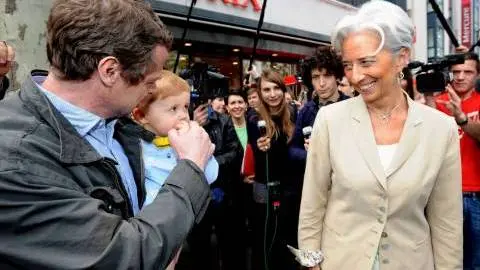Our latest views on the major central banks
The Federal Reserve is likely to pivot back to smaller 25bp rate cuts unless something changes in the economy. We also expect a 25bp ECB rate cut in October, although it’s far less certain than financial markets currently think
Federal Reserve
After cutting rates by 50bp at the September FOMC, Fed Chair Jerome Powell suggested their baseline is 25bp increments from now on unless something changes. That said, the recent strong jobs report and better survey data have led some in the market to question whether the Fed needs to cut at all. We characterise the Fed’s policy loosening as a risk mitigation move. Monetary policy has been restrictive for some time and now that inflation is looking better behaved it makes sense to lower borrowing costs to give the economy a little more breathing space.
The Fed is clearly trying to replicate the success of the 1995 loosening cycle, directed by Alan Greenspan, that achieved a soft landing and cooler inflation. After all, not all the data is pointing in the same direction, with the Fed’s own Beige Book reporting that only three of the 12 Fed regional banks are reporting economic growth. In an environment where households are becoming more nervous about the threat of job losses, the Fed looks set to continue gradually moving policy towards a more neutral setting.
European Central Bank
We are far less certain than financial markets that the ECB will cut rates at its October meeting. The two main questions for the ECB will be how it interprets the distinction between data dependence and data point dependence and how it balances between actual data and forecast uncertainty. If the ECB decides to cut rates at the October meeting, this would mark an important change in its own reaction function. It would be a rate cut to bolster growth, while longer-term risks to inflation remain.
October or not, the change in the ECB’s reaction function will come and with more growth disappointments in the offing, we expect the ECB to step up the pace and potentially size of rate cuts, bringing the policy rate to 2% before the summer of 2025.
Bank of England
Financial markets continue to think the Bank of England will cut more gradually than the Federal Reserve. UK services inflation remains stickier than elsewhere, while growth has been strong in the first half of the year. BoE hawks remain concerned that price/wage setting behaviour has changed for good. While it’s unlikely that this is the majority view on the committee, the BoE as a whole remains comfortable with a gradual approach to cuts. But that could be about to change. Recent comments by Governor Andrew Bailey in a newspaper interview have opened the door to a dovish pivot. And surveys continue to point to more muted wage/price rises among corporates.
We think services inflation will end the year below 5% (currently 5.6%), and assuming the jobs market and activity data continue to cool, we suspect officials will put more emphasis on the risks to growth as time goes on. We expect an acceleration in rate cuts to enable 25bp moves at every meeting from November onwards until the Bank Rate reaches 3.25% next summer.
Bank of Japan
The Bank of Japan is expected to pause in October. The central bank is likely to be monitoring the impact of the two rate hikes earlier this year, as well as financial market reactions to Fed policy changes. The BoJ's policy normalisation will continue, but there is no need to rush. The recent LDP leadership election result is more or less neutral for the BoJ's policy, as the newly elected leader, Shigeru Ishiba, is in favour of normalising the BoJ's policy.
We expect the BoJ to resume its rate hikes in December if October inflation growth is solid and wage growth continues. However, given the BoJ's cautious response to the financial market and the US economy, the BoJ may be worried that a December rate hike could rattle the market again, given that market liquidity is typically thin in December, so it may play it safe and raise rates in January.
This publication has been prepared by ING solely for information purposes irrespective of a particular user's means, financial situation or investment objectives. The information does not constitute investment recommendation, and nor is it investment, legal or tax advice or an offer or solicitation to purchase or sell any financial instrument. Read more
Download
Download article
10 October 2024
ING Monthly: Central bankers left holding the baby This bundle contains 14 Articles


